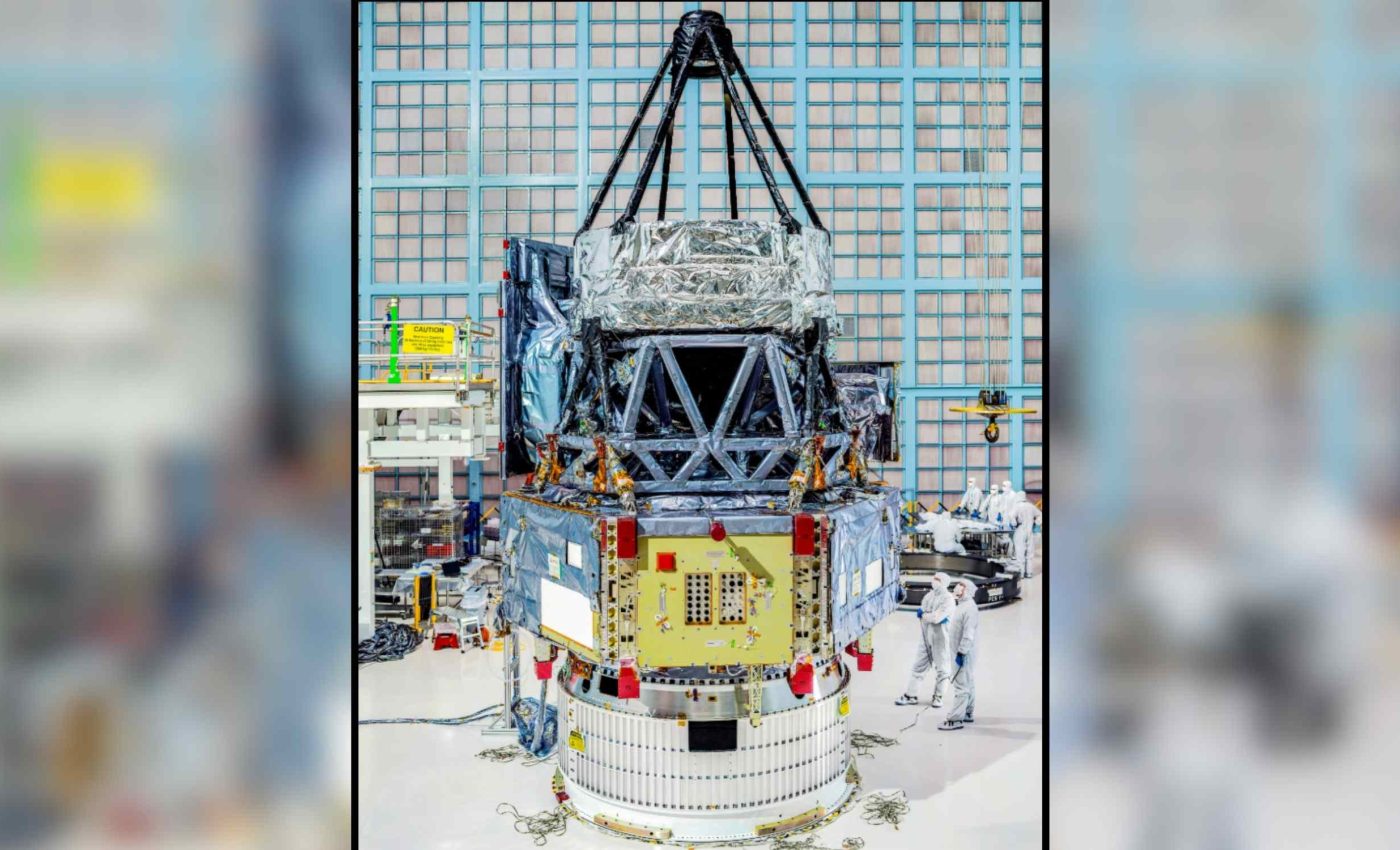
NASA's new space giant completes major hurdle before launch
NASA has joined the Roman space telescope, instrument carrier, and its two science instruments to the spacecraft. The mission stays on track for launch no later than May 2027.
The work took place inside the big clean room at NASA’s Goddard Space Flight Center in Maryland. It kicks off a long stretch of system checks before flight.
Roman space telescope progress
Technicians at NASA’s Goddard Space Flight Center completed payload integration in Greenbelt, Maryland.
“With this incredible milestone, Roman remains on track for launch, and we’re a big step closer to unveiling the cosmos as never before,” said Mark Clampin, acting deputy associate administrator for the Science Mission Directorate at NASA Headquarters in Washington.
By merging the telescope, carrier, and instruments into one unit, engineers have set the stage for comprehensive system testing.
Joining the parts locks in the precise matching of mirrors and sensors, referred to as optical alignment. Teams can now measure combined performance instead of testing pieces alone.
Roman carries a 7.9 foot primary mirror. That size matches Hubble but the camera sees a far larger patch of sky.
Meet the hardware
The Wide Field Instrument (WFI), a large infrared camera for wide surveys, drives most of the mission’s science. It packs 18 detectors and roughly 300 megapixels to map huge swaths quickly.
Its view is about 100 times wider than Hubble’s infrared images while keeping similar crispness. That means fewer pointings and faster surveys.
Roman also carries a coronagraph, specialized optics that block starlight to reveal faint nearby planets. It is a technology demonstration that will guide future flagship missions.
The rig uses deformable mirrors, flexible mirrors that adjust shape to cancel starlight speckles. Test campaigns show active control can boost suppression and stability.
Testing the Roman space telescope
Next comes observatory level functional checks. Engineers will confirm that each subsystem communicates and behaves correctly when the parts work together.
Then thermal vacuum, a chamber that mimics space pressure and temperature, will run for weeks. The assembly will face cold cycles and long soaks at stable set points.
Vibration runs will shake the payload to match launch profiles, and acoustics will pound it with rocket noise. Teams will also map electromagnetic interference, unwanted radio noise that disrupts electronics.
Teams will use precision measurement during assembly (metrology), to track alignment drift. Data will show if any tiny shifts push performance out of bounds.
Building on Hubble’s legacy
The Roman Space Telescope follows directly in the footsteps of Hubble and the James Webb Space Telescope, but it serves a different purpose.
Instead of zooming deep into a single galaxy, it will scan vast regions of space to collect statistical data on how galaxies and planets form. Its design focuses on survey science rather than narrow, high-resolution imaging.
Roman’s wide field of view, combined with its advanced infrared detectors, will allow astronomers to study millions of galaxies at once.
This broad perspective is crucial for understanding how cosmic structures evolved over billions of years.
Scientists will also use Roman’s results to refine models of dark energy and cosmic acceleration that began with Hubble’s discoveries three decades ago.
What Roman aims to learn
Roman will chart how matter clumps across cosmic time, a path to test dark energy. The gravitational lensing, light bent by mass to magnify distant objects, seen across billions of light years will be a key tool.
It will also tally planets in the Milky Way using microlensing surveys. The coronagraph will target nearby systems to directly image giant worlds and analyze their light.
Those maps and catalogs feed models of structure growth. The results will help test gravity on the largest scales we can measure.
Preparing for launch
Roman’s final months on Earth will focus on assembly reviews, calibration, and system readiness.
Every bolt, cable, and circuit will undergo cross-checks by independent verification teams before shipment to confirm the telescope can survive the physical and electrical demands of launch.
After all testing phases, Roman will be packed into a climate-controlled container and transported to Cape Canaveral Space Force Station in Florida.
Once there, it will be fueled, fitted to its launch adapter, and mounted atop a SpaceX Falcon Heavy rocket.
These steps mark the transition from engineering to operations as the mission prepares for its journey to the Sun-Earth Lagrange Point 2 (L2), a gravitationally stable zone about one million miles from Earth.
Engineers will mount the deployable aperture cover, a protective door that shields optics before flight, and add the solar panels before spring. Then the structure will be joined to the payload and spacecraft in fall.
The mission remains on schedule for completion by fall 2026, with a launch commitment of no later than May 2027. NASA also notes a push toward a potential early launch as soon as fall 2026.
—–
Like what you read? Subscribe to our newsletter for engaging articles, exclusive content, and the latest updates.
Check us out on EarthSnap, a free app brought to you by Eric Ralls and Earth.com.
—–













